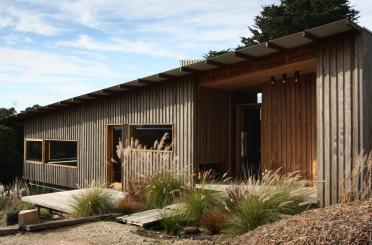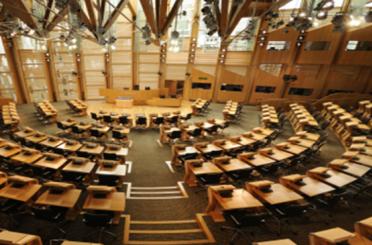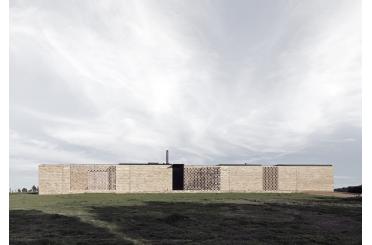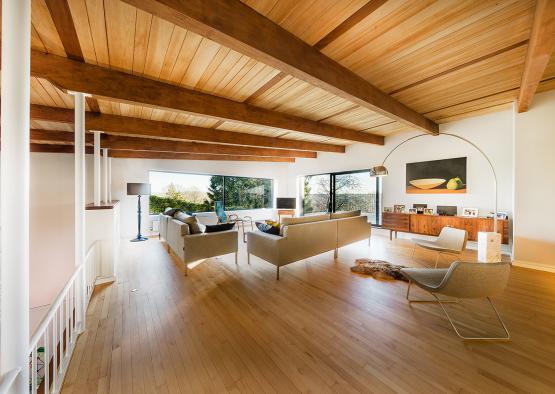
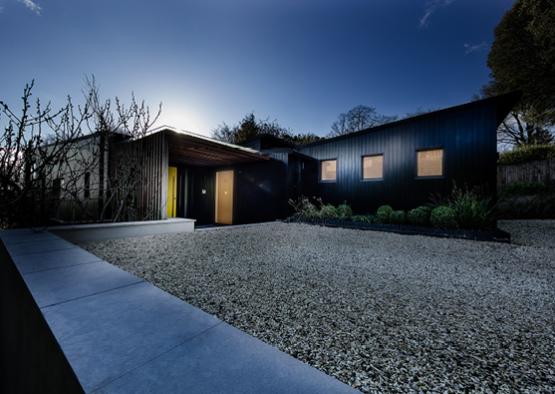
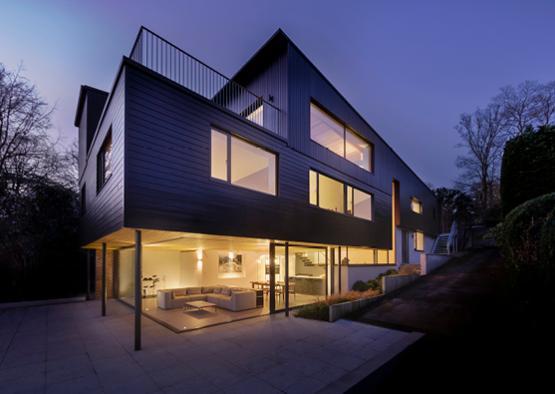
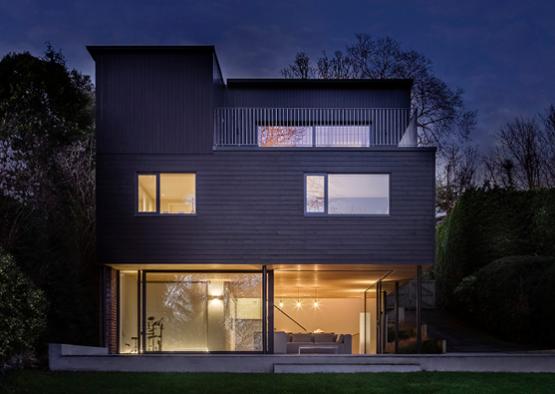
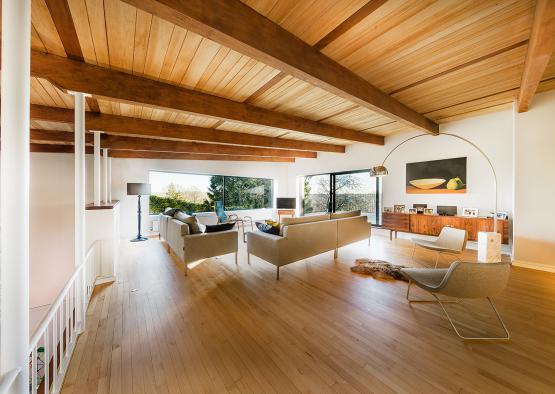
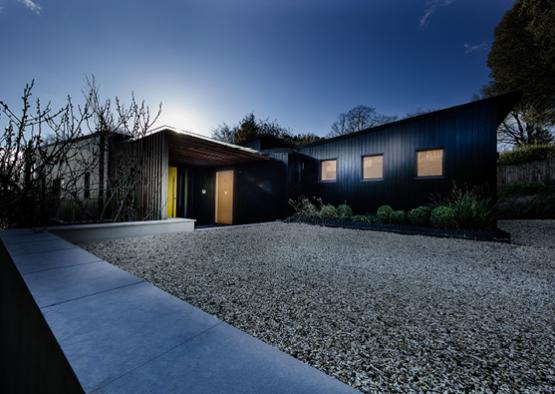
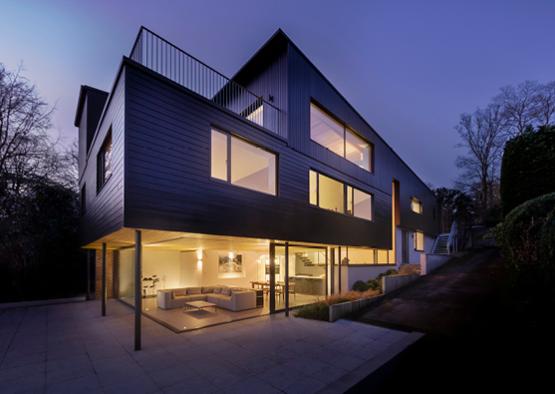
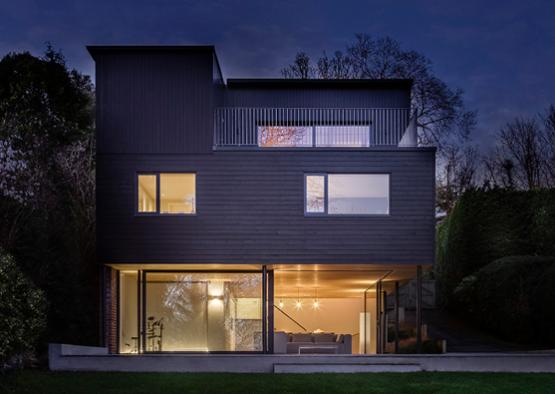
Overview
Hartrow is a large-scale refurbishment and extension project to a 1960s house in Winchester. The original house was unusual in its residential street setting, presenting an entirely different aesthetic, orientation and layout to its neighbours. Part of the challenge was to ensure that the works would celebrate its mid-century styling whilst bringing its function and performance up to twenty-first century standards.
The clients wanted to remain living in the house throughout the process, so proposals were based on a two-phase build. Plans were submitted in December and gained permission in February 2011; locals and planners welcomed the improvements. Works started in January 2012 after lengthy discussions regarding cost reduction and phasing. The design has succeeded in bringing this aging house into the twenty first century. Not only does the house now look more inviting, but its arrangement of spaces has completely changed how the owners can use their home and live in a manner that suits them and their family's needs.
Structure
The house was split over several levels to suit the sloping site, with a drive and entrance hall to the street. Externally, the driveway continued, running steeply alongside the house to the car port at the rear several levels lower; the living rooms and kitchen were located on the top floor. There was also self-contained accommodation and consulting rooms from the building's previous incarnation as a doctor's surgery. The arrangement of spaces no longer worked for modern life, and the multiple levels felt disconnected from one another and the site. The building fabric was in a bad state, suffering from damp, rotting cladding, extreme cold in Winter and over-heating in Summer. By rearranging the spaces and by bringing the building fabric and services up to modern standards, the house has become far more energy efficient.
Exterior
The building fabric was updated to make the house more energy efficient and robust. Addressing the environmental impact of the poorly performing building fabric was an important feature of the works to the house. Poor detailing to the cladding meant that the otherwise durable timber was rotting prematurely due to inadequate ventilation. This presented an ideal opportunity to replace it and add more insulation to improve the u-values of the existing external walls. Walls were stripped, over-clad with insulation and new timber cladding and render added.
The roof was leaking and barely insulated, meaning that heat loss and gain were a major issue for the clients from one season to the next. However, a prominent design feature of the original house was its exposed timber roof structure and balsawood ceiling. As such, the external felted finish was removed, insulation added and a crisp black zinc roof was added to provide a more durable and contemporary replacement.The existing windows were replaced with new aluminium double glazed units, helping to further improve the thermal performance of the building as there were considerable areas of glazing where heat was being lost.
Interior
The internal layout was rearranged to fulfill the needs of a busy modern family. The unused carport was enclosed with sliding glazing and turned into a family room for cooking, playing, eating and relaxing. This created a relationship with the exterior, allowing the space to open up to the garden for summertime entertaining and supervised play-space for the children. A calmer 'grown-up' living room was located on the top floor, taking advantage of views and providing a break from the informal family space on the bottom floor. Bedrooms, a TV room and a study are housed on the intermediate floors.
To ensure that the five split floors felt connected, a void was punched through the floor plates – giving views, stealing light and acting as a reference point on each floor. The internal balsawood was retained and carefully refurbished. The family room, kitchen and internal works to the lower and intermediate floors were carried out first, allowing the clients to live in the top of the house. The top floor, living room and external fabric was carried-out in the second phase – internal works during this second phase were purposefully minimal to reduce disruption.

